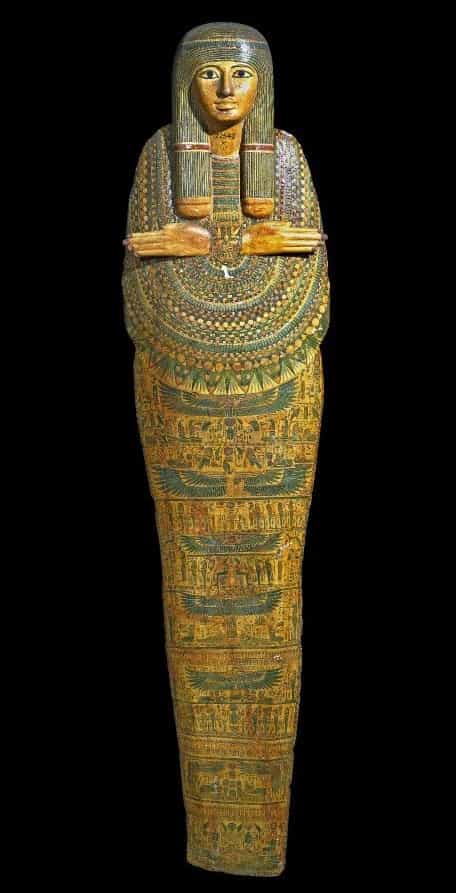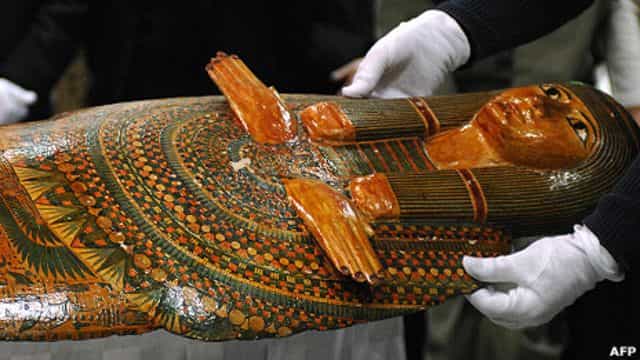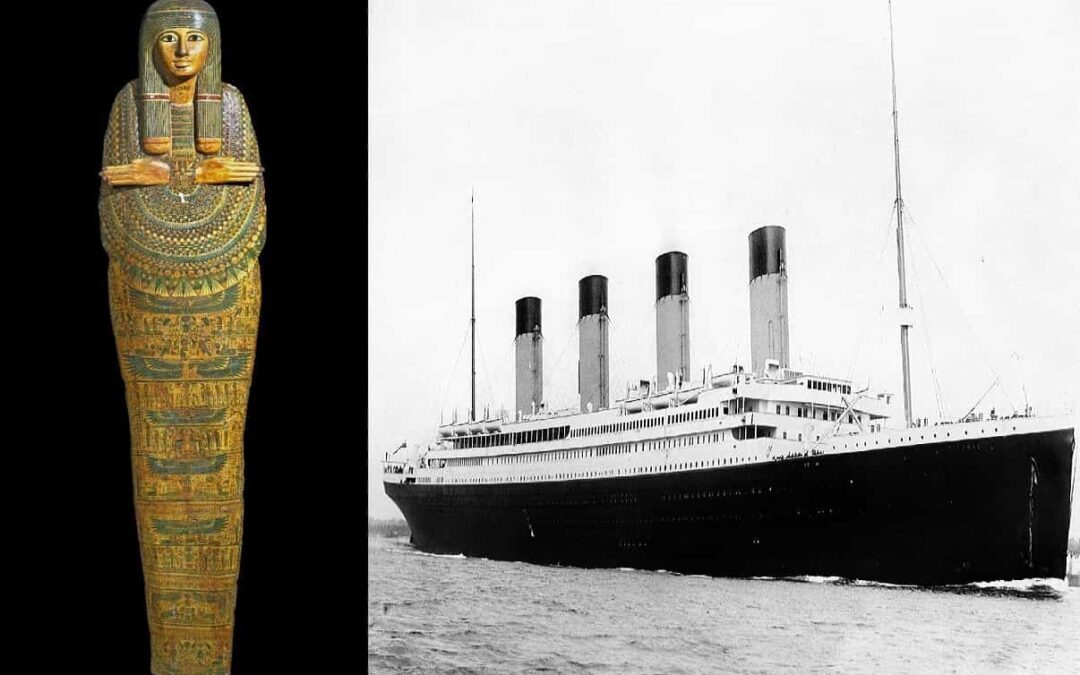In the British Museum in London, there is an ancient Egyptian coffin lid that belonged to a high-ranking woman exhibited. Multiple misfortunes are attributed to it. The most famous of these is the belief it caused the sinking of the Titanic.
Within its collection of Egyptian antiquities, the museum houses a very special guest. There is a painted anthropomorphic covering of wood and plaster which once covered the mummy of a woman – possibly a priestess of Amun-Ra.
The artefact was known years ago as the “unlucky mummy”, although, in reality, such a mummy does not exist. It is only a coffin lid.
The “unlucky mummy” is exhibited in a display case in room 62 of the museum with the identification number 22542. It measures 1.62 meters and is both painted in bright colors and covered with hieroglyphic inscriptions.
Additionally, the coffin lid depicts a female representation wearing a wig and a large necklace. What is most curious is the hands, which are placed in a strange way and rise horizontally from her chest with the palms facing out. This piece dates from the end of the 21st dynasty (950–900 BC).
A cursed piece
But why was it given such a dire name? It seems that this priestess, who has a bad habit of hanging around the museum at night, is credited with the thousand and one misfortunes that befell her successive owners, and to those who tried to tell the story of her evils – including some intrepid reporters.
Those such as Yeats, Conan Doyle, and Henry Rider Haggard made reference to the “unlucky mummy”; even a newspaper as respected as The Times published an article about her in 1921.
Thomas Douglas Murray, a member of a group of English travelers in Thebes between 1860 and 1870, acquired the artefact from grave robbers.
The trip back to London with the artefact was anything but quiet. Both Murray and his companions suffered various disasters: one went into the desert and never reappeared; another lost an arm when a servant accidentally shot him.
In the end, the artefact ended up in the hands of Mrs. Warwick Hunt, sister to one of the victims of the priestess’s evil actions.
But the inhabitants of her house soon also began to suffer a series of misfortunes, so she decided to donate the object to the British Museum in 1889.
In the museum, it continued to cause disaster. Some were less notable, such as the falls of tourists. However others were more terrible. This includes the deaths of a photographer who tried to take a photograph of the artefact, and journalist Bertram Fletcher Robinson – who died in 1907 from a fever that some said was caused by the mummy, since he had dared to disclose its alleged curses.
Accused of sinking the Titanic
But the most fascinating story surrounding this piece is the one that claims the artefact was the cause of the sinking of the Titanic, jewel of the White Star shipping company, which sank in the North Atlantic on April 12, 1912. How did such a story arise?
The legend about a cursed mummy on the ship was reportedly released by journalist and spiritualist William T. Stead, who was traveling aboard the Titanic (and unfortunately did not survive).
Sitting with other travelers in the smoking lounge, Stead recounted a scary tale starring the exploits of the cursed mummy, adding that it was traveling aboard the ship, sent by its new owner, an American billionaire, to his country.
After the sinking, another incredible story emerged about the adventures of the “unlucky mummy”.
According to this, the object floated and was collected by a Salvamento company, who took it to the USA and tried to return it to its owner, who was in London.
But the ship carrying the “unlucky mummy” back to England, the Empress of Ireland, also sank, and the coffin was again retrieved from the waters. But the tragedies would not end there.
The mummy was handed over to Emperor Wilhelm in Germany, and shortly afterwards the First World War began.
Obviously, there is all kinds of mixed information about the coffin cover of the supposed priestess of Amun-Ra, some true, others rumor, and many nonsense – but this is all part of the tradition of the curses of ancient Egyptian mummies, which stand the test of time.
In any case, there is no trace of the amulet that, according to some rumors, the priestess wore while praying: “Wake up from your prostration and the ray of your eyes will annihilate all those who want to take possession of you.”
The beautiful coffin in room 62 of the British Museum continues to observe visitors with its half smile and friendly expression, and it has been a long time since any disaster has befallen any of the thousands of tourists who visit the museum every day.
In fact, most pass in front of the “unlucky mummy” and don’t even stop to take a cursory glance…
Source: Carme Mayans, National Geographic








